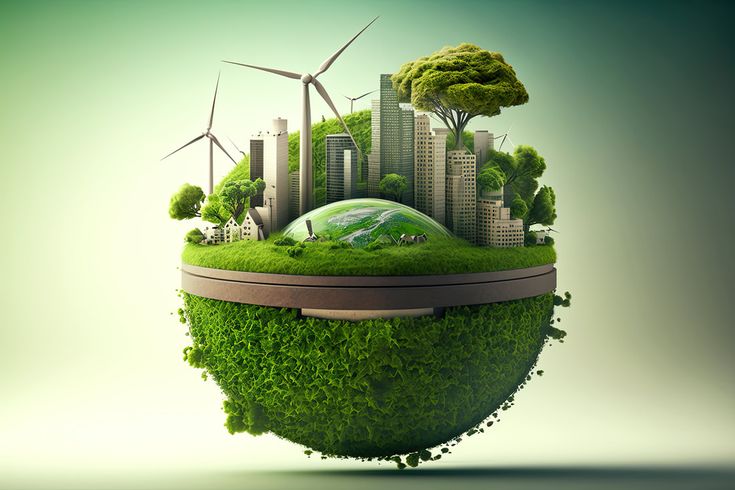The Ultimate Guide to Innovating with Sustainability in Mind

Strong 8k brings an ultra-HD IPTV experience to your living room and your pocket.
In a world facing the challenges of climate change, resource depletion, and pollution, how can innovation contribute to a more sustainable future?
Businesses, organizations, and individuals are increasingly integrating sustainability into their strategies to build long-term success while benefiting the planet.
This guide will answer key questions and help you navigate sustainable technology innovations to create meaningful, eco-friendly solutions.
1. Why Is Sustainability Crucial to Innovation?
Sustainability is no longer an option—it’s a necessity. Companies that prioritize sustainability not only contribute to environmental well-being but also strengthen their long-term competitiveness. Consumers today seek out brands that care about their environmental impact, and regulatory pressures are pushing industries to adopt greener practices.
Environmental Impact: Sustainable innovation reduces carbon emissions, conserves natural resources, and prevents pollution.
Market Demand: The demand for sustainable products and services continues to grow, influencing purchasing decisions and brand loyalty.
By addressing these concerns, innovators can create products that are both environmentally responsible and commercially successful.
2. What Are the Key Areas for Sustainable Innovation?
To integrate sustainability into your innovation strategy, it’s essential to focus on the right areas. Here are some major domains driving eco-friendly progress:
- Clean Energy Solutions: Developing renewable energy sources, such as solar, wind, and bioenergy.
- Green Transportation: Creating electric vehicles (EVs), hydrogen-powered engines, and smart mobility systems.
- Sustainable Manufacturing: Reducing waste, implementing circular economies, and using eco-friendly materials.
- Food Tech: Innovating with plant-based proteins, vertical farming, and sustainable packaging.
- Smart Cities: Using data and AI to optimize energy usage, water management, and urban planning.
3. How Can Companies Leverage Technology for Sustainability?
Advanced technologies are key to building sustainable solutions. Here’s how:
- Artificial Intelligence (AI): Helps optimize resource allocation, reduce energy waste, and improve supply chain efficiency.
- Internet of Things (IoT): Connects devices to monitor and control energy, water, and other resources in real-time.
- Blockchain: Improves supply chain transparency and ensures ethical sourcing and sustainability compliance.
- 3D Printing: Minimizes waste during production and allows for the use of recycled materials.
By adopting these technologies, organizations can innovate sustainably while improving efficiency and cost savings.
4. What Are Some Real-World Examples of Sustainable Innovation?
Real-world examples highlight the transformative potential of sustainability-focused innovation:
- Tesla: Revolutionized the auto industry with electric vehicles and energy-efficient batteries.
- Ørsted: Transitioned from fossil fuels to offshore wind farms, supplying millions of homes with renewable energy.
- Beyond Meat: Developed plant-based protein alternatives to reduce the environmental impact of livestock farming.
- Patagonia: Implemented eco-friendly manufacturing, recycled materials, and a repair-and-reuse program for apparel.
These innovators demonstrate how businesses can combine profitability with purpose by embedding sustainability into their core strategies.
5. How Can You Incorporate Circular Economy Principles?
The circular economy is a key pillar of sustainable innovation. Instead of the traditional "take-make-dispose" model, a circular economy focuses on reusing, recycling, and regenerating materials.
- Design for Longevity: Create products that are durable and can be repaired or upgraded.
- Use Recycled Inputs: Incorporate recycled or biodegradable materials to minimize waste.
- Promote Product Life Extension: Implement trade-in, repair, or refurbishment programs to keep products out of landfills.
Companies like Patagonia and IKEA have successfully adopted circular economy practices, setting an example for how businesses can reduce waste and conserve resources.
6. What Role Do Sustainable Partnerships and Collaborations Play?
Collaborations can amplify sustainable innovation efforts by combining expertise, resources, and networks. Partnerships with NGOs, research institutions, and governments can accelerate progress toward sustainability goals.
- Industry Collaborations: Companies in the same sector can co-develop sustainable solutions, such as cleaner manufacturing technologies.
- Public-Private Partnerships: Governments can support sustainable innovation through funding and policy frameworks.
For example, initiatives like the Global Plastic Action Partnership bring together stakeholders to combat plastic pollution.
7. How Can You Measure the Impact of Your Sustainable Innovations?
Measuring the success of sustainable innovation efforts is essential to track progress and improve strategies. Some key performance indicators (KPIs) include:
- Carbon Footprint Reduction: Track the decrease in greenhouse gas emissions over time.
- Energy and Water Efficiency: Measure reductions in resource consumption.
- Waste Diversion: Monitor the percentage of waste diverted from landfills through recycling and reuse.
- Social Impact: Assess improvements in community well-being, job creation, and supply chain fairness.
These metrics help ensure that sustainable innovations deliver tangible environmental, social, and economic benefits.
8. How Can Individuals Support Sustainable Innovation?
You don’t have to be a company executive to contribute to sustainable innovation. Here are ways individuals can make a difference:
Support Sustainable Brands: Choose products from companies that prioritize sustainability.
- Reduce Energy Use: Adopt smart home technologies and renewable energy solutions.
- Advocate for Policies: Support regulations that encourage clean energy, waste reduction, and conservation.
- Innovate Locally: Get involved in community projects that promote eco-friendly solutions, like urban gardens and recycling programs.
By making conscious choices, individuals can help drive demand for sustainable innovations and influence larger systemic change.
Conclusion: Why Sustainable Innovation Matters Now More Than Ever
The future depends on our ability to align innovation with sustainability. By focusing on sustainable technology innovations, we can solve critical environmental challenges while enhancing economic growth and improving quality of life. Whether it’s developing clean energy solutions, adopting circular economy principles, or creating smarter cities, sustainable innovation offers a path to a better world.
At WikiGlitz, we’re committed to spotlighting the innovators making a difference. Join us as we explore how businesses, communities, and individuals can contribute to a greener, more resilient future.
Want to stay updated on the latest eco-friendly innovations? Follow WikiGlitz and be part of the movement for sustainable progress!
If you're interested in learning more about this topic, tap this link: [ https://wikiglitz.co/blog/sustainable-technology/leading-sustainable-technology-innovations/]
If you'd like to explore other categories and broaden your knowledge, click here:
Artificial Intelligence (AI) -https://wikiglitz.co/blog/category/artificial-intelligence-ai/
Cybersecurity - https://wikiglitz.co/blog/category/cyber-security/
Cloud Computing- https://wikiglitz.co/blog/category/cloud-computing/
Internet of Things (loT) -https://wikiglitz.co/blog/category/internet-of-things-lot/
Virtual Reality & Augmented Reality -https://wikiglitz.co/blog/category/virtual-reality-augmented-reality/
Blockchain - https://wikiglitz.co/blog/category/blockchain/
Software Development - https://wikiglitz.co/blog/category/software-development/
Sustainable Technology - https://wikiglitz.co/blog/category/sustainable-technology/
At WikiGlitz, we believe that knowledge sparks change—together, let’s create a brighter, smarter future!
Note: IndiBlogHub features both user-submitted and editorial content. We do not verify third-party contributions. Read our Disclaimer and Privacy Policyfor details.


